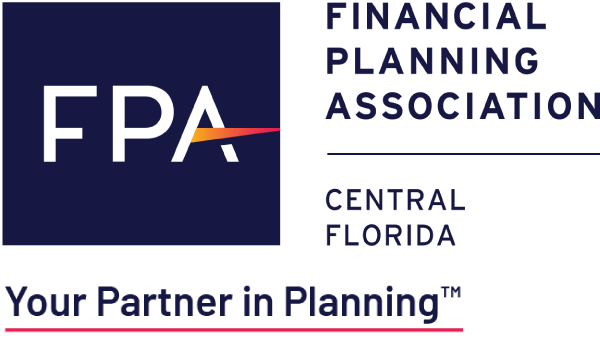
Charitable Giving in the Trump Era: Five Tax-Favored Strategies
 With the giving season approaching and the 2018 tax year nearing its close, charitably minded people will have to get more creative with their giving strategies in order to reap tax benefits under the sweeping federal tax package that took hold at the start of the year.
With the giving season approaching and the 2018 tax year nearing its close, charitably minded people will have to get more creative with their giving strategies in order to reap tax benefits under the sweeping federal tax package that took hold at the start of the year.
The 1,000-plus-page Tax Cuts and Jobs Act that President Donald Trump signed into law late in 2017 is a mixed bag for the charitably inclined. On one hand, it expands the deductible amount for charitable contributions from 50 percent up to 60 percent of adjusted gross income. But on the other, it increases the standard deduction to $12,000 for individuals, $18,000 for heads of household and $24,000 for married couples filing jointly. Taxpayers may claim the greater of the standard deduction or the total of their itemized deductions. A higher standard deduction means people will be less likely to itemize their deductions. As a result, fewer people are likely to take advantage of the increase in charitable deductibility, because their deductions in a given tax year won’t amount to enough to justify itemizing their deductions.
“In the past, it was estimated that one-third of taxpayers would itemize [deductions on their federal tax returns]” says FPA member Thomas F. Scanlon, a CERTIFIED FINANCIAL PLANNER™ (CFP®) professional and Certified Public Accountant based in Manchester, Conn. “With these [tax policy] changes, it is estimated that only 10 percent of taxpayers will itemize. This has many charities worried.” Their chief concern is that the Trump tax law will discourage people from providing financial support to their favorite causes and organizations.
While it’s too soon to ascertain whether those fears will be realized, one thing about the new policy is certain, say tax and financial experts: It will change the dynamics around charitable giving. How, then, to fulfill charitable giving aspirations and reap tax benefits from doing so? Here are five approaches that finance and tax professionals suggest people explore:
- Lumping/stacking/bunching charitable donations (and other deductions) in a single tax year instead of spreading them across multiple years. In many cases, people who formerly itemized their federal deductions will in some years claim the standard deduction and in other years, group their deductions so collectively they amount to enough to justify itemizing deductions. With this approach, known as lumping, bunching or stacking, people target a given tax year to amass enough itemized deductions, from charitable contributions to medical expenses, to make foregoing the standardized deduction worthwhile. Such an approach requires advanced planning to coordinate deductions in multiple areas.
In a lumping scenario, people would end up itemizing deductions every few years instead of every year. In years where a person claims the standard deduction, “itemized deductions like charitable gifts have no impact on your federal taxes,” notes FPA member Joshua D. Stillman, CFP®, with Capitol Financial Consultants in McLean, Va.
Lumping could result in fewer smaller charitable giving gestures, suggests FPA member Mike Giefer, CFP®, of the Johnston Group in Minneapolis. “People who give to charity for pure philanthropic purposes will obviously continue to do so, while those that do so for tax purposes might not be as generous writing as many checks to small organizations asking for $25, $50 or $100.”
- Giving through a donor-advised fund. A donor-advised fund is a charitable giving vehicle to which people can contribute cash, stocks and/or other assets such as real estate. As the donor, you then advise the fund administrator of the IRS-qualified charity or charities to which you’d like them to make a donation. Through this structure, a person can claim a charitable deduction for the full amount of the donation in a single year, provided the amount of their itemized deductions exceeds the amount of the standard deduction, then, through the fund, spread out charitable donations over a period of years. For example, explains Giefer, “a taxpayer who gives $5,000 per year to a charity would probably not itemize deductions. If they made a $50,000 contribution to a donor advised fund, they could benefit from the tax deduction [for that one tax year], but then make gifts out of the fund of $5,000 per year over the next 10 years.”
And, as Stillman notes, if you donate appreciated securities (investments whose value has increased in the time you’ve owned them), you avoid having to pay capital gains taxes that you would have incurred if you sold them.
As useful as they can be for fulfilling charitable aspirations, DAFs do come with limitations, notes FPA member Paul Tramontozzi, CFP®, with Lob Planning Group in Purchase, NY, including possible account minimums, strict limits on grant allocations and management fees.
- Donating directly from a retirement account. Under federal tax law, people who have a traditional IRA (individual retirement account) or a 401(k) must start taking a certain percentage of assets out of those accounts once they hit age 70.5. These are called required minimum distributions, or RMDs. Tax law allows them to make a direct distribution from such an account, to a charity, in what’s termed a qualified charitable distribution (QCD). Not only does the QCD count toward their RMD amount in a given year, it also reduces the person’s taxable income in the amount of the QCD, thus functioning like an itemized charitable deduction. The size of a QCD is limited to $100,000 or 60 percent of adjusted gross income.
This maneuver is for people 70+ who don’t necessarily need the RMD money coming out of their IRA or 401(k) to live on. As with RMDs, the deadline for making a QCD is December 31. “This is a valuable tool for high [earnings] bracket taxpayers who have no need for additional cash flow and previously had significant itemized deductions,” notes FPA member Sergio G. Garcia, CFP® with Quest Capital Management in Dallas, Tex.
- Donating appreciated assets. Monetary gifts aren’t the only way to provide financial support to a charitable organization. People also can donate investment assets — shares of stock, mutual funds, even real estate holdings. If the value of those assets has increased (appreciated) while the person has owned them, then donating them not only enables the person to support a favorite charity, it allows them to avoid eventually having to pay capital gains tax on the assets when they’re sold. “If in any single year the amount of [donated assets] exceeds the standard deduction, the taxpayer would benefit from both not recognizing the gain and receiving the charitable deduction,” notes Garcia.
- Capitalizing on new pass-through provisions in the tax code. Under the new tax policy, owners of “pass-through businesses” — LLCs, partnerships, S Corps and sole proprietorships — can deduct 20 percent of their qualified business income (QBI), meaning they essentially will pay income tax on 80 percent of their revenue. In this context, business owners can use charitable contributions strategically to reduce taxable income if they are near or above the income limit for the new pass-through deduction, explains FPA member Leon LaBrecque, CFP®, managing partner at LJPR Financial Advisors in Troy, Mich. Say a lawyer who is single has $175,000 in taxable income from her law practice (which is an LLC taxed as a partnership). Under the new law, she would get a QBI deduction of about $20,475, he says. But if she made charitable donations of $17,500, not only would she get the deduction for the $17,500, she would also qualify for a larger QBI deduction of $31,500.
November 2018 — This column is provided by the Financial Planning Association® (FPA®) of ___________, the principal professional organization for Certified Financial PlannerTM (CFP®) professionals. FPA seeks to elevate a profession that transforms lives through the power of financial planning. Through a collaborative effort to provide more than 23,000 members with tools and resources for professional education, business support, advocacy and community, FPA is the indispensable resource for CFP® professionals. Please credit FPA of ___________ if you use this column in whole or in part.
The Financial Planning Association is the owner of trademark, service mark and collective membership mark rights in: FPA, FPA/Logo and FINANCIAL PLANNING ASSOCIATION. The marks may not be used without written permission from the Financial Planning Association.

